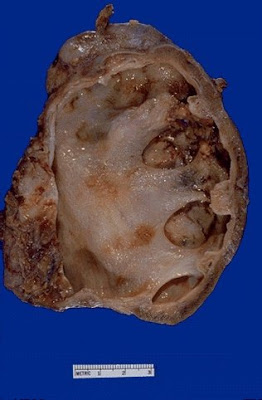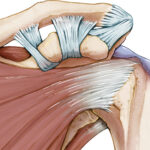Struvite renal calculi, also known as magnesium ammonium phosphate stones, are a specific type of kidney stone formed in response to urinary tract infections (UTIs) caused by certain bacteria. These stones are typically large, irregularly shaped, and can cause significant discomfort and complications if left untreated. Struvite stones are unique in their ability to form rapidly and in large quantities, often leading to obstruction and damage to the urinary tract system.
This article provides an in-depth look into struvite renal calculi, discussing their causes, symptoms, diagnosis, and treatment options. Understanding the underlying factors and managing the condition effectively is crucial for preventing further stone formation and related health issues.

The Formation of Struvite Renal Calculi
Struvite stones are a result of the interaction between specific bacteria and the urine. The primary bacteria involved in the formation of these stones are Proteus, Klebsiella, Pseudomonas, and other urease-producing organisms. These bacteria produce an enzyme called urease, which breaks down urea in the urine, leading to an increase in ammonia. The higher ammonia levels, combined with magnesium and phosphate, facilitate the formation of struvite crystals.
Key Factors in Struvite Formation:
- Infection: The presence of a urinary tract infection caused by urease-producing bacteria is the primary factor in the formation of struvite stones.
- Alkaline Urine: Struvite stones are more likely to form in an alkaline urine environment, which occurs when the pH of the urine rises above normal levels.
- Magnesium and Phosphate: Elevated levels of magnesium and phosphate in the urine promote the crystallization of struvite stones.
Once these factors align, struvite crystals begin to form and gradually combine to create larger stones, often filling the renal pelvis and causing obstruction.
Symptoms of Struvite Renal Calculi
Struvite kidney stones can present with a variety of symptoms depending on their size, location, and whether they cause obstruction or infection. Smaller stones may pass through the urinary tract without causing significant symptoms, while larger stones can lead to severe complications.
Common Symptoms of Struvite Stones:
- Flank Pain: Severe pain in the back or side, especially if the stones obstruct the urinary tract.
- Hematuria: Blood in the urine, which may be visible or detected through urinalysis.
- Frequent Urination: A sensation of urgency or the need to urinate more frequently than usual.
- Painful Urination: A burning or painful sensation during urination.
- Cloudy Urine: Urine that appears cloudy or has an unusual odor, often due to the presence of infection.
- Fever and Chills: In cases where the stone causes infection, fever and chills may be present, which is indicative of a urinary tract infection or pyelonephritis.
In some cases, struvite stones can grow rapidly and obstruct the urinary system, leading to more serious complications such as kidney damage, sepsis, and renal failure if left untreated.
Diagnosis of Struvite Renal Calculi
The diagnosis of struvite renal calculi typically involves a combination of medical history, imaging tests, and laboratory analysis. Early detection is essential to prevent complications such as infection or kidney damage.
Diagnostic Methods:
- Urine Culture and Sensitivity: A urine culture can help identify the presence of urease-producing bacteria, which are responsible for struvite stone formation.
- X-ray: An abdominal X-ray can detect the presence of stones, although struvite stones may not always appear on plain films due to their radiolucency.
- Ultrasound: This non-invasive imaging technique is highly effective in detecting kidney stones, including struvite calculi, and assessing the size and location of the stones.
- CT Scan: A contrast-enhanced CT scan provides a detailed image of the urinary tract and can accurately identify the size, shape, and location of kidney stones.
- Blood Tests: Blood tests may be conducted to assess kidney function and detect signs of infection or inflammation.
Treatment Options for Struvite Renal Calculi
The management of struvite renal calculi focuses on relieving symptoms, treating the underlying infection, and preventing further stone formation. The treatment plan may include both medical and surgical interventions.
1. Antibiotic Therapy
Since struvite stones are primarily caused by urinary tract infections, the first step in treatment is often antibiotic therapy to eliminate the underlying infection. Specific antibiotics are chosen based on the results of urine culture and sensitivity testing, targeting the urease-producing bacteria responsible for the infection.
- Oral or Intravenous Antibiotics: Depending on the severity of the infection, antibiotics may be given orally or intravenously.
- Long-term Antibiotic Therapy: In some cases, long-term prophylactic antibiotics may be prescribed to prevent recurrence of infection and stone formation.
2. Stone Removal
Surgical intervention is often required for large or obstructing struvite stones. The most common methods for stone removal include:
- Percutaneous Nephrolithotomy (PCNL): A minimally invasive procedure in which a small incision is made in the skin to remove the stones directly from the kidney.
- Shock Wave Lithotripsy (SWL): High-energy shock waves are used to break the stones into smaller fragments that can be passed through the urinary tract.
- Ureteroscopy: A flexible tube is inserted into the urinary tract to remove or break down the stones.
3. Preventing Recurrence
Preventing the recurrence of struvite stones involves a combination of dietary modifications, lifestyle changes, and medication. These include:
- Regular Hydration: Ensuring adequate fluid intake to help flush out bacteria and prevent stone formation.
- Urinary Acidification: In some cases, medications that acidify the urine may be prescribed to prevent the formation of struvite crystals.
- Treating Underlying UTIs: Continuous monitoring and treatment of any urinary tract infections to prevent recurrence of struvite stones.
Prevention of Struvite Renal Calculi
Preventing the formation of struvite renal calculi involves addressing the risk factors that contribute to their development, particularly recurrent urinary tract infections. Key prevention strategies include:
- Timely Treatment of UTIs: Prompt diagnosis and treatment of urinary tract infections with appropriate antibiotics can help prevent the formation of struvite stones.
- Hygiene and Sanitation: Practicing good personal hygiene and ensuring proper sanitation can reduce the risk of urinary tract infections.
- Monitoring Kidney Health: Regular check-ups with healthcare providers to monitor kidney function, particularly for individuals who have a history of recurrent UTIs or kidney stones.
Struvite renal calculi represent a serious health concern, especially for individuals who experience recurrent urinary tract infections. By understanding the causes, symptoms, diagnosis, and treatment options for struvite stones, patients and healthcare providers can work together to prevent complications and manage the condition effectively. Early detection, appropriate antibiotic therapy, and surgical intervention when necessary are key components in the successful treatment of struvite kidney stones. Additionally, preventive measures, including proper hygiene and ongoing management of UTIs, can help minimize the risk of recurrence and promote long-term kidney health.

